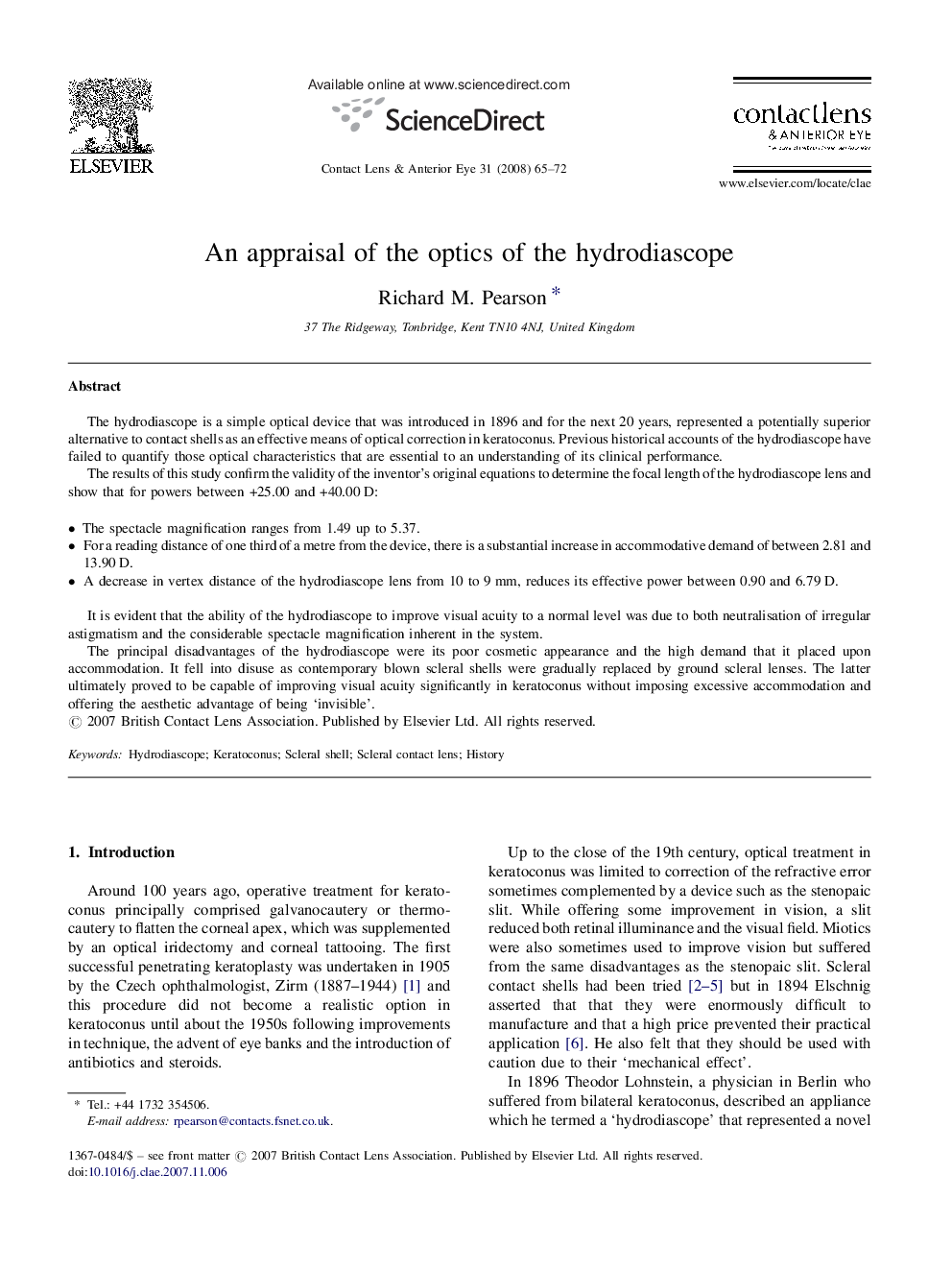| Article ID | Journal | Published Year | Pages | File Type |
|---|---|---|---|---|
| 2693960 | Contact Lens and Anterior Eye | 2008 | 8 Pages |
The hydrodiascope is a simple optical device that was introduced in 1896 and for the next 20 years, represented a potentially superior alternative to contact shells as an effective means of optical correction in keratoconus. Previous historical accounts of the hydrodiascope have failed to quantify those optical characteristics that are essential to an understanding of its clinical performance.The results of this study confirm the validity of the inventor's original equations to determine the focal length of the hydrodiascope lens and show that for powers between +25.00 and +40.00 D:•The spectacle magnification ranges from 1.49 up to 5.37.•For a reading distance of one third of a metre from the device, there is a substantial increase in accommodative demand of between 2.81 and 13.90 D.•A decrease in vertex distance of the hydrodiascope lens from 10 to 9 mm, reduces its effective power between 0.90 and 6.79 D.It is evident that the ability of the hydrodiascope to improve visual acuity to a normal level was due to both neutralisation of irregular astigmatism and the considerable spectacle magnification inherent in the system.The principal disadvantages of the hydrodiascope were its poor cosmetic appearance and the high demand that it placed upon accommodation. It fell into disuse as contemporary blown scleral shells were gradually replaced by ground scleral lenses. The latter ultimately proved to be capable of improving visual acuity significantly in keratoconus without imposing excessive accommodation and offering the aesthetic advantage of being ‘invisible’.
